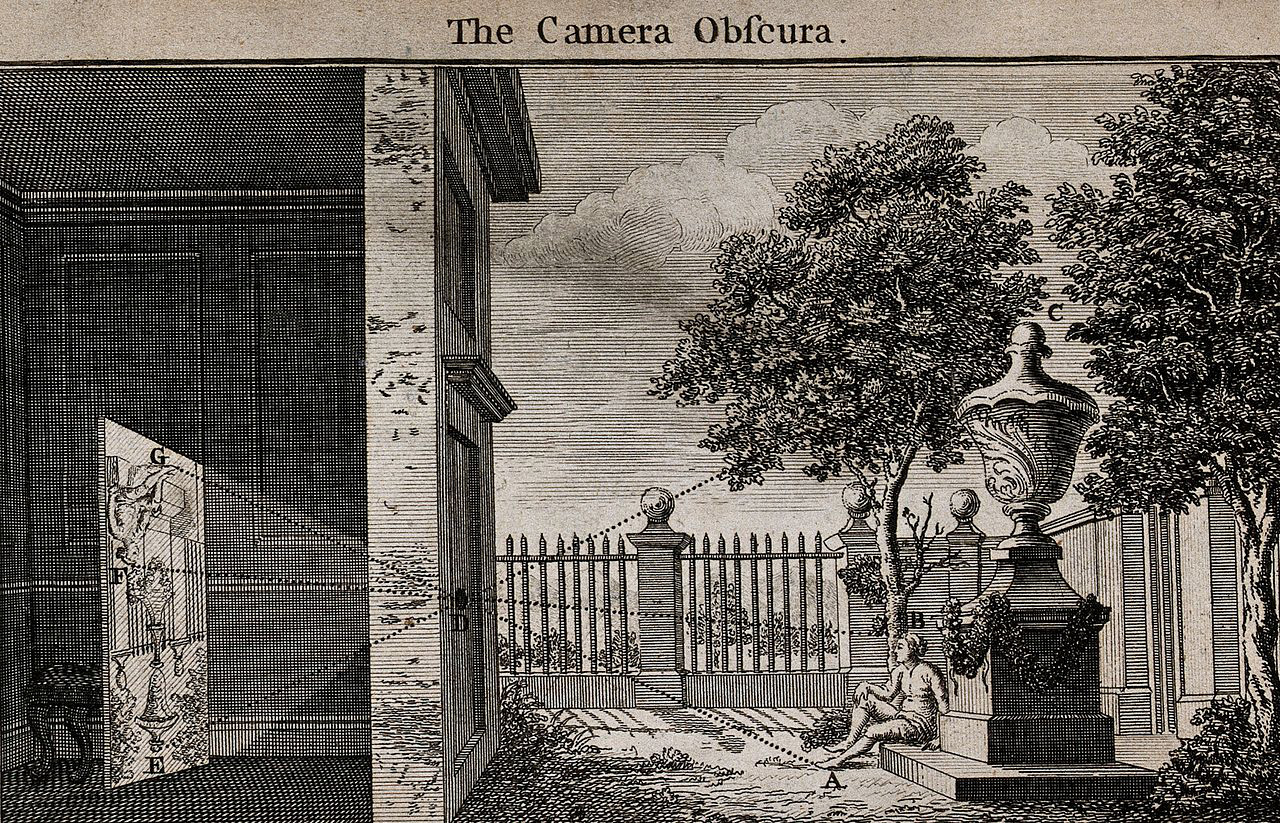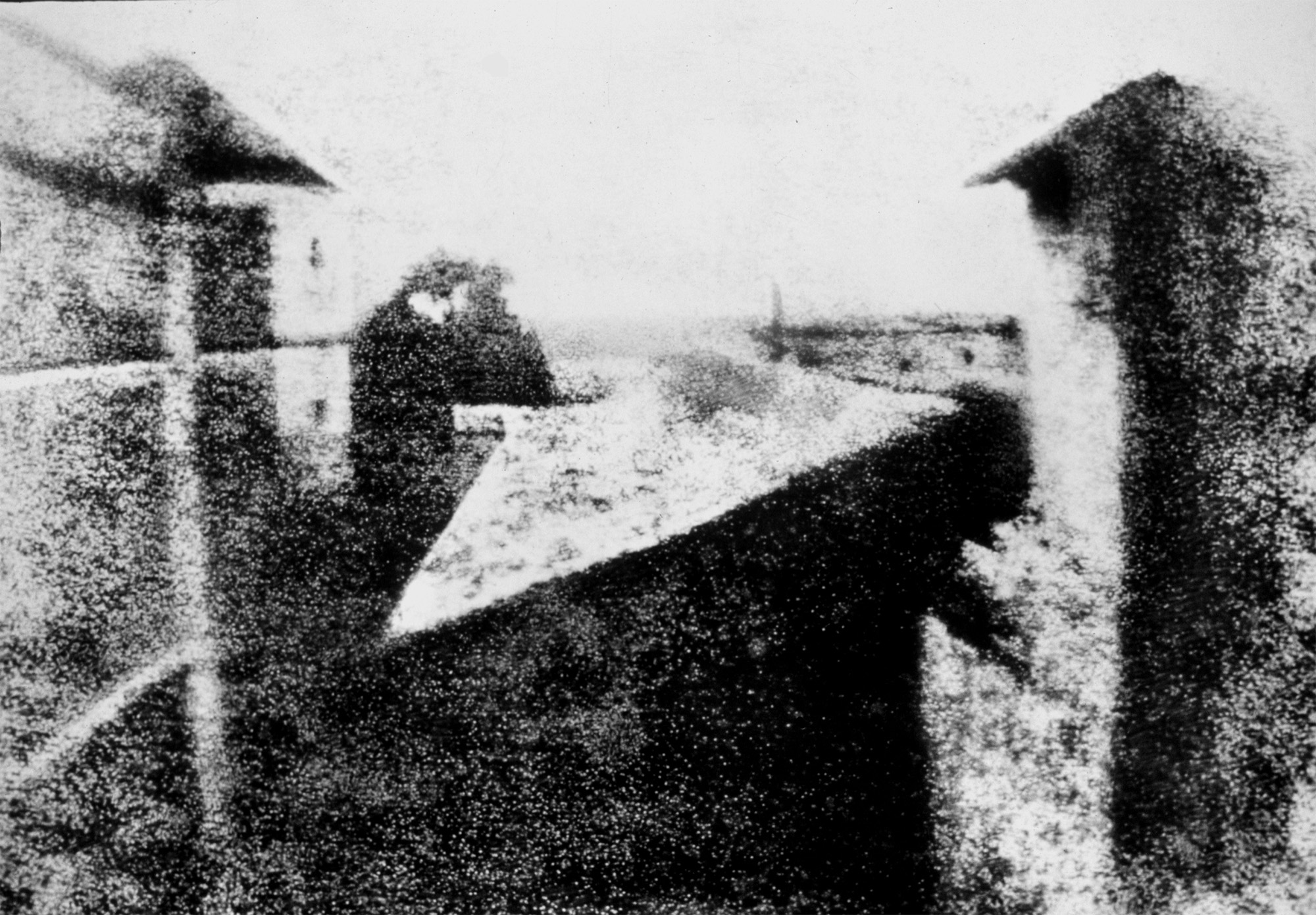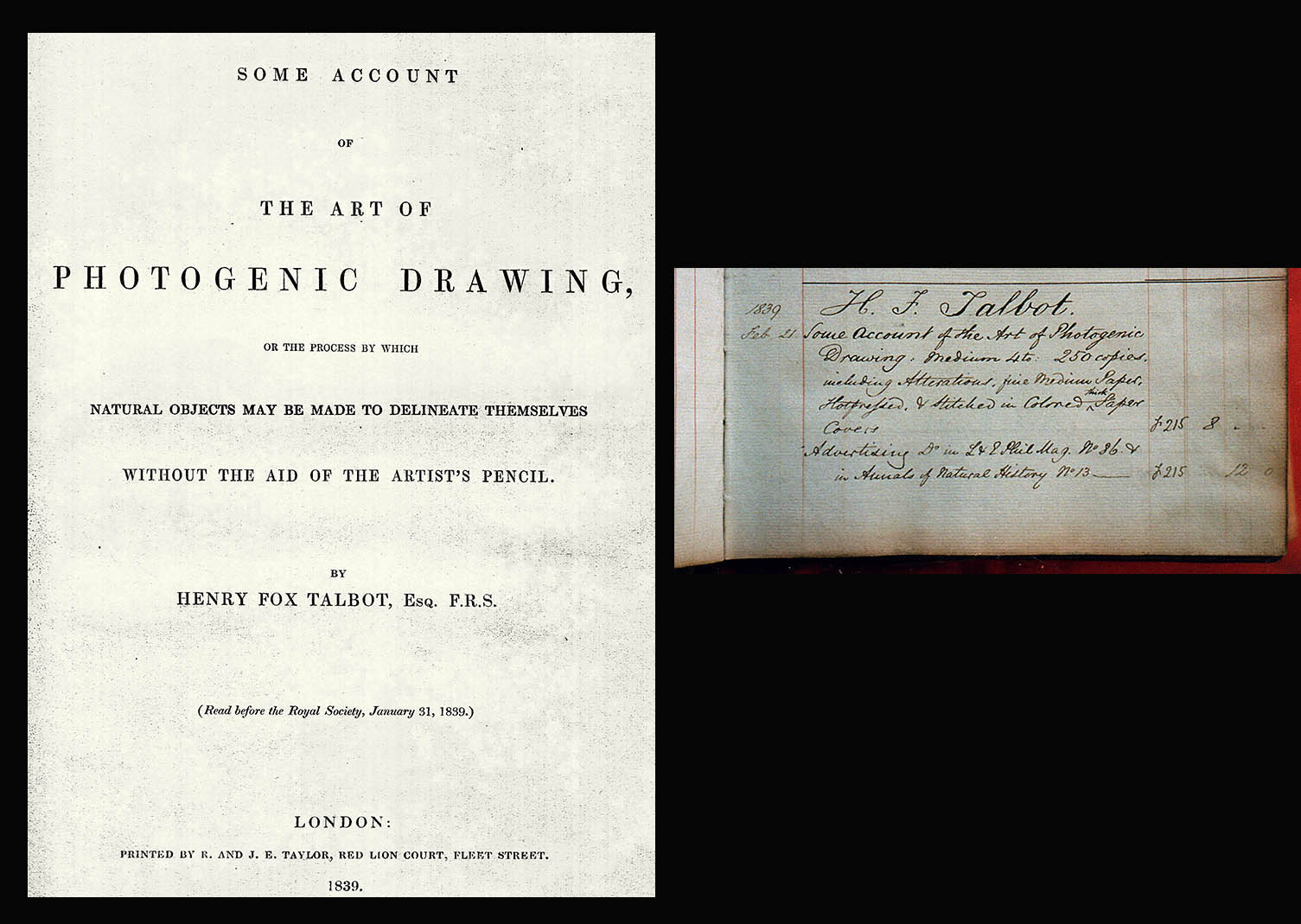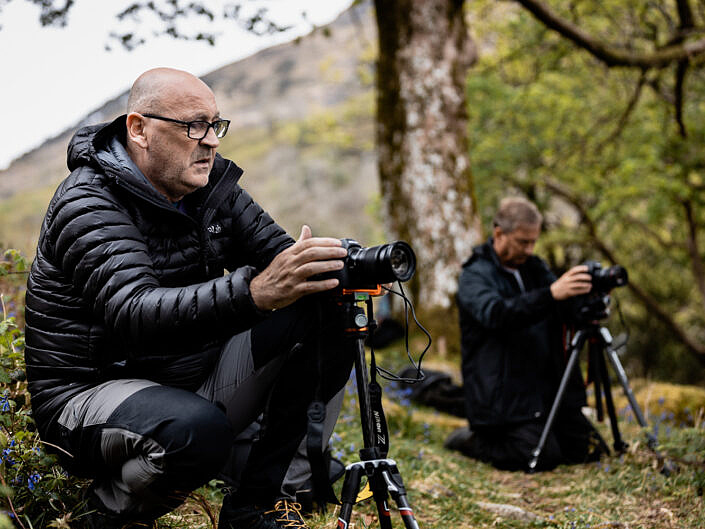Cameras are something we use almost daily in our modern lives and often without much thought. Almost everyone has access to a camera, be it through their smartphone or a more professional DSLR, these devices help us capture memories that would otherwise be forgotten.
But things have always been so easy when it comes to photography. We have seen a lot of technical advances within a short space of time, considering the history of cameras and photography. To get a new perspective on the technology in your pocket, we’re going to take a deep dive into the history of cameras and answer the all-important question of when was the camera invented?
Image Credit: Wellcome Images
It All Started With The Camera Obscura
When we talk about the first camera and when this technology was invented, we have to go back to a period before even photography was invented. This history of the camera is a lot longer than the history of photography because cameras were developed from the camera obscura.
This was an invention long before photography was possible, and it was a way of projecting imagery onto a larger space. The phrase camera obscura comes from Latin, like many of the phrases we still use today and refers to a darkened room where a small hole or lens was drilled into one side. Through this hole, an image would be projected. This is where the first ideas for a photograph came into place.
The oldest known record of a camera obscura being referred to comes from a Han Chinese philosopher Mozi, who can be traced to 470 to 391 B.C. While this is not the date that marks the official invention of the cameras we know today, it is clear now why the history of cameras is longer than photography itself as it started before 391 B.C!
This was the beginning of the camera that we know today, as it developed from these darkened rooms through many generations – each of which we will explore in more detail throughout this article.
The Beginning: The History of Photography
To understand where cameras were invented and how they were invented, we need to take a look at photography as a whole. Even though the history of the camera is longer than that of photography, there is still relevance in this topic.
As we have mentioned, the camera we know today can be linked to the camera obscura concept. This was written many years before the concept of photography could even be imagined by philosopher Mozi and then in the 11th century by the Arab physicist Ibn al-Haytham (his name was Latinised as Alhazen, so you may see him being referred to more often by this name).
Alhazen wrote influential books at the time about optics, including studies and experiments regarding a small amount of light in a darkened room which is the concept behind camera obscura. He is also credited with the invention of the pinhole camera. The pinhole camera works like a camera obscura as the light comes through a small pinhole.
Alhazen’s work and studies inspired a range of people in the field, including Leonardo Da Vinci and Johannes Kepler.
The use of the camera obscuras throughout history has commonly been as a drawing aid, and this has been found as far back as 1550. The popularity of these devices as drawing aids led to more inventions, making them portable so artists could use this light work in various locations. Since the late 17th century, these kinds of devices have been used as a drawing aid through boxes and tents.
The camera would not be where it is today without this invention and the studies that went into this kind of optics. However, before the invention of photography processes like roll film and wet plates, there was no way to truly capture an image using camera obscuras. These early cameras were the size of a room with space for at least one or two people inside, although they gradually became more compact over time.
Johann Zahn is a key name in this part of the history of photography, he envisioned the first small and portable camera for photography in 1685, but this technology would not be possible for another 150 years. The studies into this kind of light work done during the 17th century is a key moment for the history of photography as they were used when the first camera and images were invented during the 18th and 19th centuries.
The First Camera: (18th-19th Century)
Before the first photographic camera was invented, many studies were going on, and it had been known by scientists for hundreds of years that certain substances darkened when exposed to sunlight.
Over these hundreds of years, it had been found that substances like silver salts darkened when exposed to sunlight, and in 1727 a German scientist would publish a series of studies that dove deeper into this phenomenon.
Johann Heinrich Schulze was the man who discovered that the darkening of these salts was not due to exposure to heat or air, as it had been originally believed, and it was instead completely due to the light and it this chemical process that changed the history of photography into what we know it today.
The studies kept coming, as in 1777, the Swedish chemist Carl Wilhelm Scheele discovered that silver chloride was especially sensitive to the light and darkened into an insoluble ammonia solution when in contact with sunlight. This might sound like a complicated scientific process that has no bearing on photography of today, but it was this chemistry that was used by the man who invented the first photograph.
Thomas Wedgwood was the first person to create images with this chemistry, which he did by placing items, from leaves to insect wings, on top of ceramic pots that he had coated with silver nitrate. To capture an image, this set-up was exposed to the light.
This kind of photograph was not permanent, as Wedgwood had not set up a fixing mechanism to capture the images for longer than a few seconds. However, it was the beginning of photography and created the groundwork necessary for images to be captured in the first place.
The first official photograph was taken in 1825, and it remains to be the oldest surviving photograph in history. This was captured by Joseph Nicéphore Niépce, a French inventor who used a sliding wooden camera box that was made by Charles and Vincent Chevalier of Paris.
Niepce had been trying to capture permanent images using the camera obscura since 1816, and he succeeds in taking shots out of his window. The first photograph to be invented was taken using an 8-hour exposure on pewter that was coated with a kind of asphalt known as bitumen. The French inventor named his discovery ‘heliography’ and then corresponded with another inventor, Louis-Jacques-Mandé Daguerre, to improve the process.
While Niepce is praised for taking the first photograph using a camera, he is not credited with the first photograph of a person. This is the Boulevard du Temple, taken in 1838 by Louis Daguerre, and it is one of the most famous images today. Although this image appears to be of a deserted street, a closer inspection reveals it to be perhaps the first official photograph of a person.
Improving The Design
The pair continued to work together, with Louis Daguerre improving the camera design as Niépce tried to improve the contrast in his ‘heliographs’. Unfortunately, these inventors’ work together stopped when Joseph Nicéphore Niépce died in 1833.
Daguerre continued to work on the ‘heliographs’ and succeeded in creating a high-contrast, sharp image. He did this by exposing the image on a plate that had been coated in silver iodine and then exposing the plate again to mercury vapour. This was a complicated process, but by 1837 Louis Daguerre had managed to create the same effects using a simple salt solution.
He named his new process Daguerreotype but, despite trying to market it for a few years, was unsuccessful. His lucky break came with the help of François Arago, a French scientist and politician who got the French government interested in Daguerre’s photography. Together, they worked with the government for the public release of the Daguerreotype process.
Another Inventor Changes History
At the same time, an English scientist was also working on a similar invention. William Henry Fox Talbot was working independently and had invented a similar process to fix cameras using silver salts.
He was dismayed that he had been beaten by Daguerre in the announcement of photography but continued to publish the pamphlet ‘Some Account of the Art of Photogenic Drawing’ to the Royal Institution in 1839. This was the first published description of photography in history.
Following this publication, in less than two years, Talbot developed a two-step process for creating photographs and capturing them on paper. He called these calotypes, and this method was the first to use negative prints.
If you have ever used a film camera before, then you will be aware of negative prints as these pieces of film reverse all colours in the image.
Negative prints do have a purpose, as in theory, they can allow for unlimited copies of the positive version to be made. As well as allowing for unlimited printing of images, the calotype process was also the first to allow for retouching. The printmaker was able to retouch images and alter the final piece.
Despite these developments, calotypes were never as popular during this time as daguerreotypes because these kinds of photographs had a clearer, sharper image. However, calotype did have the benefit of allowing for duplicates of images to be made through the negative contact prints, which were not possible with daguerreotypes.
This was a significant event in the history of photography as it is this two-step process of positive and negative prints that formed the basis for modern photography and the cameras we use today.
When Was The Camera Invented?
The first photographic camera that was developed for commercial manufacture was invented in 1839 by Alphonse Giroux. This was a daguerreotype camera that had a double-box design, a landscape lens fitted to the outer box, and a holder for the glass focusing screen and image plate was in the inner box.
To take an image with this first box camera, the inner box would slide which would bring objects at varying distances to as sharp of a focus as required. Once the user had managed to secure a focused image through the glass screen, this glass was replaced with a sensitized plate.
These original cameras used a knurled wheel that controlled a copper flap in front of the lens, and this acted as a shutter. Even though some of this technology remains today when we take a photo, these early cameras required a long development. In 1839 it could take anywhere between 5 and 30 minutes for an image to develop.
Other Variants Of Camera
As with any kind of technology, other companies started developing their own versions of the camera following the Giroux daguerreotype camera.
In 1841, Charles Chevalier, who had previously worked with Joseph Nicephore Niepce during his original invention lenses, created the double box camera that was half the size of the Giroux. Another French design was released in 1841 and was created by Marc Antoine Gaudin, which used different sized holes in front of the lens for variable light exposure.
An all-metal camera was developed around this time in Germany by Peter Friedrich Voigtländer, which had a distinguishing feature. This was created by Joseph Petzva, and it was known as the Petzval lens, which was nearly 30 times faster than any other in this period.
This lens was also the first in the history of photography to be used specifically for portraits until 1889 when Carl Zeiss created the anastigmat lens, which was then used in portraits.
Within a decade of the camera being introduced to America, three new general forms were invented. These were the American-box camera, the Robert’s-type camera, and the Lewis-type camera, and so began a new period in the history of photography.
How Was A Photo Made?
The daguerreotype process, which was made to create the first photograph, was slowly replaced with the collodion wet plate process. This happened in the 1850’s and required photographers to coat and sensitize the glass or iron plates used in their camera shortly before taking a photo and installing them back into cameras before they dried.
The wet place process had been developed by Frederick Scoff Archer in 1848, who was dissatisfied with the poor contrast offered by calotype images.
While the early photo plates were fairly similar to the first photograph on the daguerreotype, it wasn’t long before more sophisticated measures started appearing. In 1864 the Dubroni camera allowed this event of coating and sensitizing of glass plates to be inside of the camera itself, rather than in a dark room as it had been done previously.
Following this, other cameras were invented that used multiple lenses that could photograph several small portraits on one plate. It was during this wet plate period that the use of bellows in the camera for focus became widespread, which made cameras less bulky over time.
As the exposure times were very long with the first camera types, the photographer simply had to remove the cap from the lens and waited for the estimated minutes based on the lighting conditions before they could replace it.
However, as more sensitive photographs and cameras became available, these devices began to incorporate mechanical shutters that could accurately estimate the time of exposures required.
The Invention Of The Film Camera
The use of photographic film in cameras was first invented by George Eastman, an American entrepreneur and the name behind the legendary Kodak camera. Eastman was based in Rochester, New York, and started manufacturing paper film in 1885, but had switched to celluloid film four years later.
The first camera from Eastman, of New York, was the Kodak which went on sale in 1888 and used this kind of film. This camera was not too unlike what we use today, as it was a very simple single-lens reflex camera and was loaded with 100 exposures on the photographic film.
By the end of the 19th century, the line of Kodak camera models had expanded to include both box and folding cameras, both using film. It was the invention of film that started the creation of the video camera and changed the face of the motion picture industry forever.
With film, motion pictures and videos could now be made, and this is due to Eastman’s work.
Photography Today
Color photography was being experimented with in the 1840’s, but it was not until 1861 that this camera image was taken. This color photograph was taken using the three-colour method that had been suggested by James Clerk Maxwell, a Scottish physicist, in 1855.
Photographers today have all of the scientists and inventors to thank for all of the photos they are now able to take. With the development of film, a video camera became more accessible to people, and many camera formats have appeared since.
Nowadays, people of all walks of life, whether they consider themselves to be an artist or photographer or just a simple consumer, can take a photo anytime they want. If film is the main reason why video cameras became commercial, digital cameras are the reason why many of us wanted to become a photographer in the first place.
We no longer have to wait for our film to develop, to spend hours testing the light or trying to get things right. Now photographers can capture anything they want in a bright color image using sleek devices that fit into their pockets. A photo can be taken within seconds, and many people don’t even give the action a second thought.
Many of us might remember using digital cameras and how easy this made our work as a photographer, but the technology just keeps getting better! It now takes less than a second to capture hundreds of photos with the touch of a button.
Some Final Thoughts
The entire history of the camera could fill up a book, but we hope that this brief oversight has taught you something new. Taking photos and having those photographs to look back on is such a privilege and one that would not be possible without the work of those in this article and many more.






